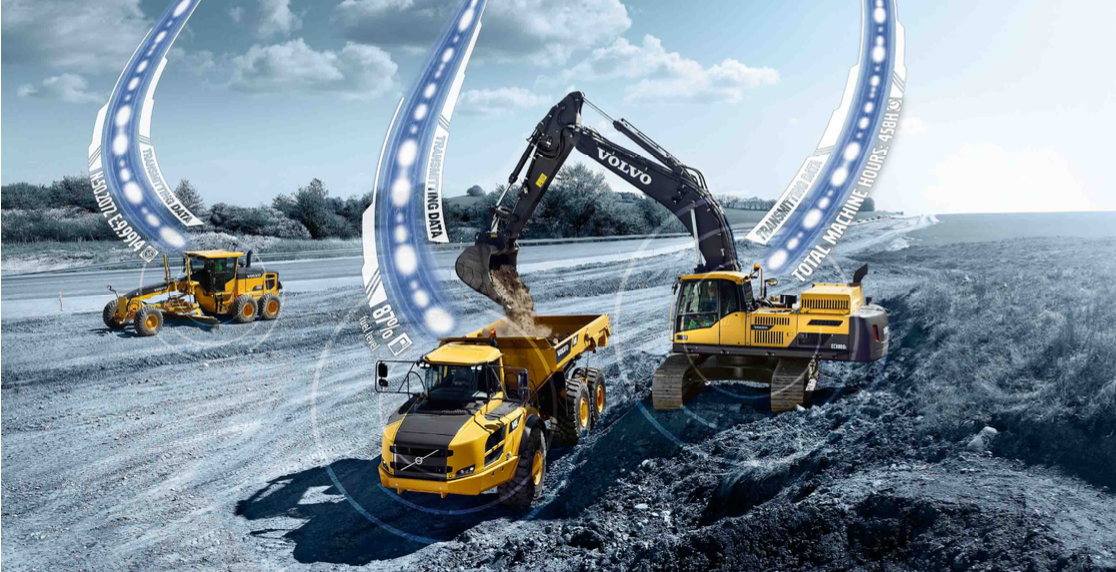The Evolution of Hybrid Heavy Equipment
Hybrid technology in heavy equipment has evolved significantly, driven by advancements in battery technology, power electronics, and control systems. Here are some key developments:
1. Early Hybrid Systems:
- Initial hybrid systems focused on integrating small electric motors with diesel engines to provide auxiliary power and improve fuel efficiency.
- Regenerative braking systems were introduced to capture and reuse energy, enhancing overall efficiency.
2. Modern Hybrid Drivetrains:
- Advanced hybrid systems use larger batteries and more powerful electric motors to enable full-electric operation for short periods.
- Sophisticated power management systems optimize the use of diesel and electric power based on operational demands.
3. Plug-In Hybrids:
- Plug-in hybrid heavy equipment can be charged from external power sources, allowing for extended electric-only operation.
- These systems offer greater flexibility and efficiency, particularly in urban and residential areas.
Benefits of Hybrid Heavy Equipment
The integration of hybrid technology in heavy machinery offers numerous advantages:
1. Fuel Efficiency:
- Hybrid systems improve fuel efficiency by optimizing the use of diesel and electric power, reducing overall fuel consumption.
- Regenerative braking and energy recovery systems further enhance efficiency, leading to cost savings.
2. Reduced Emissions:
- Hybrid equipment produces lower emissions compared to traditional diesel-powered machines, contributing to cleaner air and reduced greenhouse gas emissions.
- Electric-only operation in sensitive areas minimizes environmental impact.
3. Enhanced Performance:
- Instant torque from electric motors provides smoother and more responsive operation, improving machine control and productivity.
- Hybrid systems can deliver additional power when needed, enhancing performance in demanding applications.
4. Operational Flexibility:
- Hybrid equipment can switch between diesel and electric power based on operational requirements, offering greater flexibility and versatility.
- This adaptability makes hybrid systems suitable for a wide range of applications and environments.
Challenges and Considerations
Despite the promising benefits, the adoption of hybrid heavy equipment faces several challenges:
1. Complexity and Maintenance:
- Hybrid systems are more complex than traditional diesel engines, requiring specialized knowledge and maintenance.
- Ensuring reliability and longevity of hybrid components is critical.
2. Initial Costs:
- The initial purchase price of hybrid heavy equipment is higher than that of conventional machinery.
- Demonstrating a clear return on investment through fuel savings and operational efficiency is necessary.
3. Battery Life and Performance:
- Battery performance can be affected by extreme temperatures and demanding operational conditions.
- Ensuring consistent and reliable battery performance is crucial for hybrid systems.
4. Infrastructure and Training:
- Adequate charging infrastructure is needed to support plug-in hybrid systems.
- Operators and maintenance personnel require training to effectively use and maintain hybrid equipment.
Future Prospects
The future of hybrid heavy equipment is promising, with ongoing research and development driving further advancements. Here are some anticipated trends:
1. Improved Battery Technology:
- Advances in battery technology, such as solid-state batteries and high-energy-density cells, will enhance the performance and efficiency of hybrid systems.
- Longer battery life and faster charging capabilities will further improve operational efficiency.
2. Integration with Renewable Energy:
- Hybrid equipment can be charged using renewable energy sources, reducing environmental impact and operational costs.
- Solar-powered charging stations and mobile units will support hybrid operations in remote locations.
3. Enhanced Power Management Systems:
- Advanced power management systems will optimize the use of diesel and electric power, improving efficiency and performance.
- AI and machine learning algorithms will play a role in predictive maintenance and operational optimization.
4. Regulatory Support and Incentives:
- Government incentives and regulations will encourage the adoption of hybrid heavy equipment, promoting sustainable practices.
- As technology matures and becomes more affordable, hybrid systems will become more widespread.
Conclusion
Hybrid heavy equipment represents a significant step towards a more sustainable and efficient future in the construction, mining, and agricultural sectors. By combining the strengths of diesel and electric power, hybrid systems offer a practical solution for reducing emissions, improving fuel efficiency, and enhancing performance. While challenges remain, the benefits of hybrid technology are clear, and ongoing advancements will continue to drive its adoption. Embracing hybrid heavy equipment today will pave the way for a cleaner, more flexible, and efficient tomorrow.

